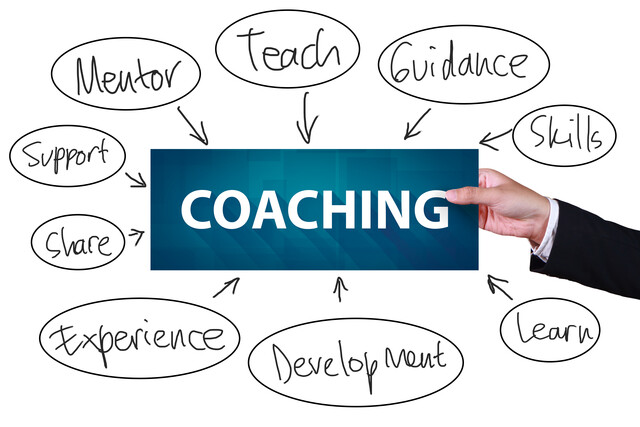There is no question about it. E-mail marketing gets results.
In a 2015 survey of more than 5,000 marketers, Salesforce Marketing Cloud found e-mail is the key marketing medium for 73 percent of respondents. The report also demonstrated that e-mail, as a marketing tool, continues to grow. Sixty percent of the marketers reported that e-mail is a "critical enabler of products and services." This response is up from 42 percent in 2014.
How does e-mail usage continue to increase? The growth is fueled by smart phone usage. More than 72 percent of online adults in the U.S. send or receive personal e-mails via smart phone at least weekly, according to a current study by Forrester Research.
The top metrics used to measure an e-mail's success, according to Salesforce, are click-through rates (47 percent), conversion rates (43 percent), and click-to-open rates (38 percent). The best and most clever e-mail cannot do its job if your intended recipient does not open it.
So how can you create more compelling marketing e-mails? Here are 10 guidelines for sales-oriented e-mail messages.
1. Write an exciting subject line. It doesn't matter how great an offer your e-mail has, if your potential customer doesn't get to your copy.
The best subject lines are short and precise. If your readers are using mobile devices, they will only see the first 15 characters. And, according to Mail Chimp, they will make a decision whether to open your message or not in three seconds or less.
Make the message relevant, and make your point fast. If you are selling a product, your subject line should include brand, discount, and expiration date. If your message is B2B, this formula can translate to challenge, solution, and deadline.
It's not only your reader's attention you are trying to capture with your subject line. You are also trying to avoid the dreaded spam filter. According to Mail Chimp research, the four worst words to trigger spam filters are "free," "help," "percent off" and "reminder."
The best subject lines are straightforward and simple. They do not scream at the reader with all caps or exclamation points. They don't promise things that seem too good to be true. They can be as simple as "Your July newsletter" or "BOGO ends Friday" or "Invitation to (your company's) annual party."
2. Use pre-header space effectively. Some e-mail providers display a snippet of text beside the subject line. This text--called a pre-header-- is about 100 characters and is pulled from the first few lines of your e-mail.
Depending on the messaging platform you use, the pre-header may include a "Having trouble? View as a web page" link that provides readers with the option to view the message in a browser. Although this link can be helpful if you have images in your message, it does not serve as much of an enticement for getting your readers to open your message.
You can make good use of this pre-header space, by putting your call to action here.
2. Get personal. In a study of open rates for over 200 million e-mails, Mail Chimp found that the factors that affect how a reader views an e-mail include frequency, sender, and the nature of the message itself. The study found that personal messages top the list, followed by affiliations and timely news.
Stale newsletters, requests for money, and offers that are too good to be true are at the bottom of the barrel.
These results are not surprising � all us would rather read an e-mail from someone we know than from a stranger. However, you can learn from them. The main lesson is that you should aim to give your marketing emails a personal touch.
A Harris Interactive study of American online shoppers found that 81 percent of survey respondents were at least somewhat likely to purchase additional items at a physical store, or online, after receiving personalized e-mails.
Eighty-two percent said they were at least somewhat willing to receive promotional e-mails from retailers if the messages were personalized with past shopping habits. And almost 70 percent of the respondents said they would share personal preferences with retailers if the information would improve the relevancy of the e-mail messages.
Here are some ways to personalize e-mails:
-
Use recipients' first names in the subject line.
-
Use recipients' names in the salutation.
-
Use your name in the closing
Just as you wouldn't keep repeating someone's name in a conversation, however, you can sound strange � or even a little creepy � if you use your reader's name too much in an e-mail.
No matter how many people on your send list, it is important to keep in mind that there is one person on the other end of each of your e-mails � not a company, an individual. If you give your message that one-to-one feel, you will see more results.
Write your sales message as if you were talking to your reader personally. Remember that you-focus of previous lessons and ask yourself: "Why should my reader be interested in this message? What will my reader get out of this message? What problem or potential problem does it solve?
Would I read this if it was sent to me?" If not, don't send it.
Think of your message as having a conversation. Use "you-focused" words. Use everyday words instead of jargon or business clich�s.
3. State facts rather than promises. You can earn your reader's trust by providing facts and results, rather than empty pledges. Cite qualified sources and satisfied customers to back up your points.
Rather than, "Our in-house inventory and reliable delivery are guaranteed to save you time and money," write "Our customers save as much as $1,000 per year when they switch to our service. Here's what they have to say..."
Your readers are savvy. Don't tell them you are not trying to sell them something. They know you are.
Replace, "I am not trying to sell you something, but I would like to meet with you to discuss the possibility of working together," with "Let's meet to discuss how our service/offer can save you money."
Avoid words and phrases like, "no obligation," "guarantee," and "free trial." Instead of, "You are under no obligation to continue after our free trial," or "This product is fully guaranteed," write, "We have a 90-day return policy," or, "We will not charge your account until after you've had 30 days of service."
4. Be concise. Thomas Jefferson wrote, "The most valuable of all talents is that of never using two words when one will do." George Orwell advised, "If it is possible to cut a word out, always cut it out."
And Dr. Seuss put it this way: "So the writer who breeds more words than he needs, is making a chore for the reader who reads."
With all the information your readers are bombarded with on a daily basis, less is definitely more.
After your reader has opened your e-mail, you have only three to five seconds to grab his or her attention. Use short sentences and bullet points to get your message across.
There is no need to cram tons of details into every e-mail. Save them for your landing page, or include more thorough explanations in the blog articles on your website, or other sales materials.
Instead of: "Our customers engage us to help them fight rising healthcare costs and the decreased productivity that results from staff absenteeism."
Try: "With our easy-to-use software and our on-call health practitioners, you can reduce your company's healthcare expenses."
Write: "Our software and specialists will help lower absenteeism and poor performance from employee health problems."
5. Have a call to action. What's the point? What's the bottom line? What do you want your reader to do? A successful marketing e-mail has a clear call to action.
Do you want your reader to make an appointment? Give them the contact details.
Do you want them to visit your website? Have a clear clickable link.
Do you have a remarkable sale ending soon? Tell them the deadline.
Use active language and strong verbs such as:
-
Sign up now.
-
Click here.
-
Read this article.
-
Download now.
6. Use a clean, uncluttered design. Even with the best subject line, you can lose your readers soon after they open your message by overwhelming them with content.
Too many graphics -- headers, sidebars, images and multiple columns -- can spoil the effect you are trying to achieve with your words.
Your main message and your call to action need to be near the top of your message. Be sure to avoid totally image-based e-mails. If your call to action includes a graphic element, such as a "click here" button, make sure that the link is also accessible as regular text for your mobile recipients, who cannot see the images.
A one-column approach increases legibility on mobile devices. Consider keeping your e-mails to be between 320 px and 550 px wide.
Also, the typical e-mail reader will quickly click out of a message with heavy blocks of text. In addition to writing short paragraphs of two to three sentences, plan to break up your text with bullet points and with plenty of white space around images.
7. Use a P.S. A postscript can be an e-mail marketer's best friend. Here is where you can repeat your offer or emphasize a deadline. This added sentence can help you create a sense of urgency.
Here is an example:
P.S. Act now. Last summer's response was so great, we ran out of inventory in 48 hours.
A P.S. has a personal feel to it. Here you can address any concerns your readers may have. Here's how:
P.S. We have a no-questions-asked, no-hassle returns policy. You have nothing to lose, if you change your mind.
A postscript can offer an additional bonus. If your readers have made it all the way through your e-mail, reward them with a free product or a discount.
Here's an example:
P.S. Here's a bonus to our e-mail subscribers. Place this code ____ on your order form and you will get an additional 15 percent discount.
You also can use a postscript to offer a valuable third-party endorsement. Include a testimonial here from a new customer, or place a link to your ratings on an industry site.
8. Proofread. The importance of proofreading your marketing message cannot be overstated.
Use the techniques we outlined in previous lessons (including reading it aloud, reading it from end to beginning, or changing the type size) to make sure you don't close the door on a new sale as soon as you have opened it.
Errors take the reader out of the message and bring your credibility into question.
9. Test. Send your marketing email to yourself and to some of your colleagues. Read it on different types of devices and with different browsers to help you spot any potential trouble spots.
Does it make it through spam filters? Is the copy readable? What about the images? Is your font size readable in any format? Use a body copy minimum of 12 pt. and headlines of 16 pt., so that your words are legible on a mobile device.
Keep track of your engagement metrics. Some e-mail services use metrics to determine whether your subscribers have opened your e-mails during in a certain period of time. By following these numbers, you will see if your messages are ending up in spam for certain accounts and what modifications you may need to make.
If there are inconsistencies in the "from" address and the "reply to" address in your messages, your e-mails may be being filtered as spam, for example. Also, if you are on a shared server, your e-mail may be sent to the spam filter, because of a kind of guilt by association.
Here's one last tip. Make an effort not to waste people's time. When it comes to e-mails, there definitely can be too much of a good thing. Even well-written, personal e-mails can be annoying if they are constantly showing up in your inbox. Only e-mail when you have something fresh and valuable to say.



























